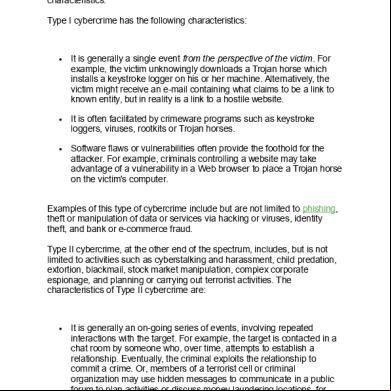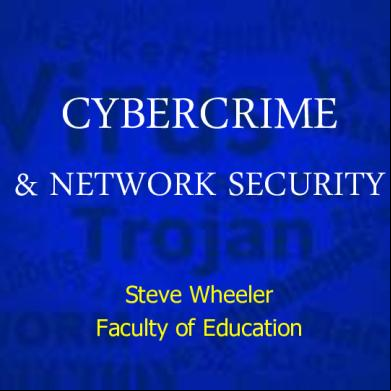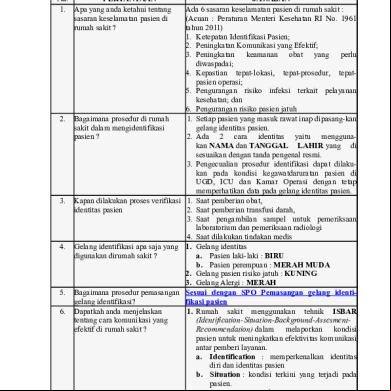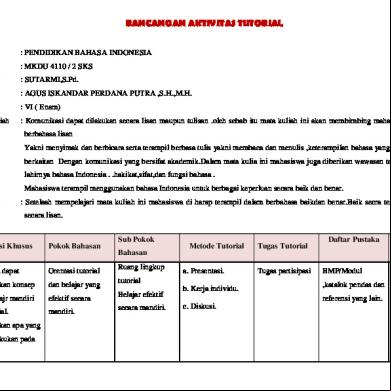Characteristics Of Cyber Crime 1f6j1i
This document was ed by and they confirmed that they have the permission to share it. If you are author or own the copyright of this book, please report to us by using this report form. Report 3i3n4
Overview 26281t
& View Characteristics Of Cyber Crime as PDF for free.
More details 6y5l6z
- Words: 322
- Pages: 2
Characteristics of Cyber Crime Norton classifies cyber crime into two groups as well as list their characteristics: Type I cybercrime has the following characteristics:
It is generally a single event from the perspective of the victim. For example, the victim unknowingly s a Trojan horse which installs a keystroke logger on his or her machine. Alternatively, the victim might receive an e-mail containing what claims to be a link to known entity, but in reality is a link to a hostile website.
It is often facilitated by crimeware programs such as keystroke loggers, viruses, rootkits or Trojan horses.
Software flaws or vulnerabilities often provide the foothold for the attacker. For example, criminals controlling a website may take advantage of a vulnerability in a Web browser to place a Trojan horse on the victim's computer.
Examples of this type of cybercrime include but are not limited to phishing, theft or manipulation of data or services via hacking or viruses, identity theft, and bank or e-commerce fraud. Type II cybercrime, at the other end of the spectrum, includes, but is not limited to activities such as cyberstalking and harassment, child predation, extortion, blackmail, stock market manipulation, complex corporate espionage, and planning or carrying out terrorist activities. The characteristics of Type II cybercrime are:
It is generally an on-going series of events, involving repeated interactions with the target. For example, the target is ed in a chat room by someone who, over time, attempts to establish a relationship. Eventually, the criminal exploits the relationship to commit a crime. Or, of a terrorist cell or criminal organization may use hidden messages to communicate in a public forum to plan activities or discuss money laundering locations, for example.
It is generally facilitated by programs that do not fit into under the classification crimeware. For example, conversations may take place using IM (instant messaging) clients or files may be transferred using FTP.
It is generally a single event from the perspective of the victim. For example, the victim unknowingly s a Trojan horse which installs a keystroke logger on his or her machine. Alternatively, the victim might receive an e-mail containing what claims to be a link to known entity, but in reality is a link to a hostile website.
It is often facilitated by crimeware programs such as keystroke loggers, viruses, rootkits or Trojan horses.
Software flaws or vulnerabilities often provide the foothold for the attacker. For example, criminals controlling a website may take advantage of a vulnerability in a Web browser to place a Trojan horse on the victim's computer.
Examples of this type of cybercrime include but are not limited to phishing, theft or manipulation of data or services via hacking or viruses, identity theft, and bank or e-commerce fraud. Type II cybercrime, at the other end of the spectrum, includes, but is not limited to activities such as cyberstalking and harassment, child predation, extortion, blackmail, stock market manipulation, complex corporate espionage, and planning or carrying out terrorist activities. The characteristics of Type II cybercrime are:
It is generally an on-going series of events, involving repeated interactions with the target. For example, the target is ed in a chat room by someone who, over time, attempts to establish a relationship. Eventually, the criminal exploits the relationship to commit a crime. Or, of a terrorist cell or criminal organization may use hidden messages to communicate in a public forum to plan activities or discuss money laundering locations, for example.
It is generally facilitated by programs that do not fit into under the classification crimeware. For example, conversations may take place using IM (instant messaging) clients or files may be transferred using FTP.










